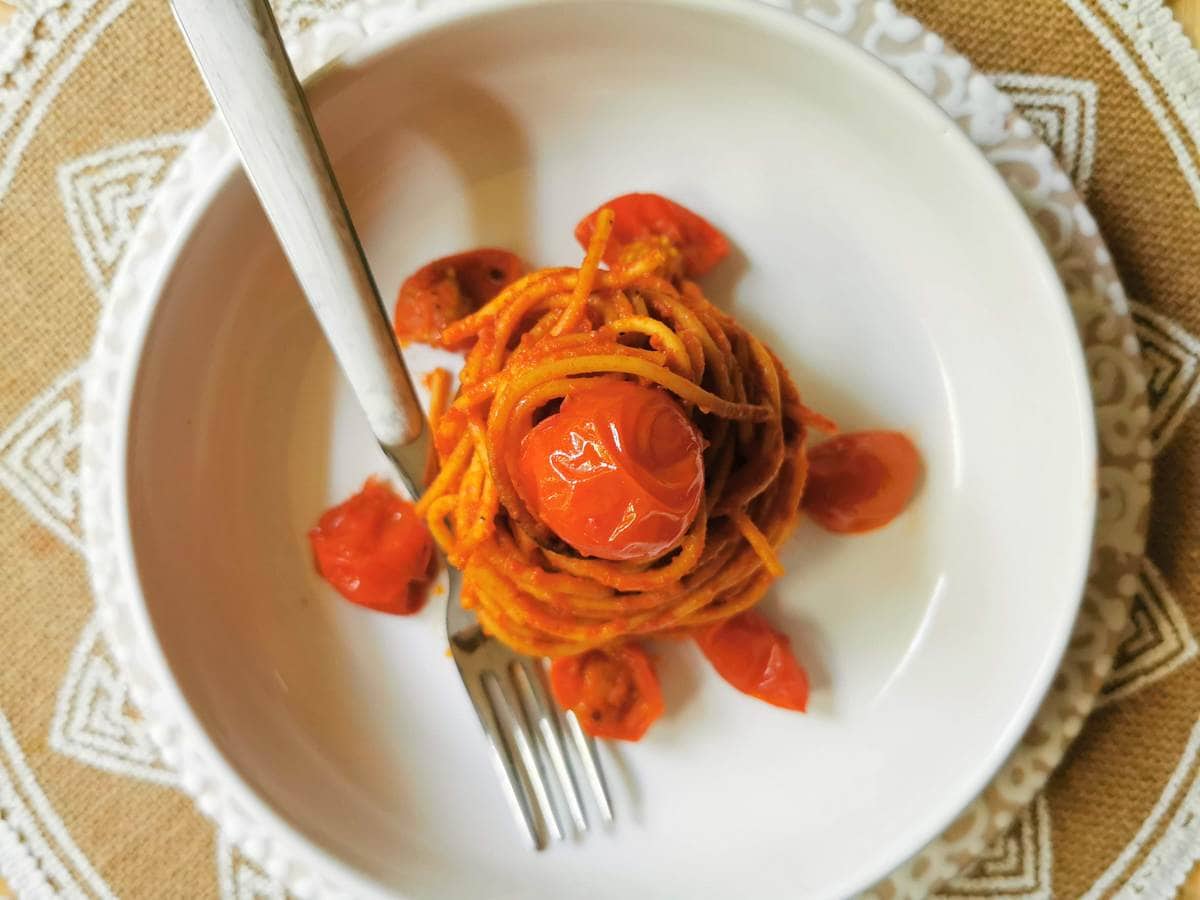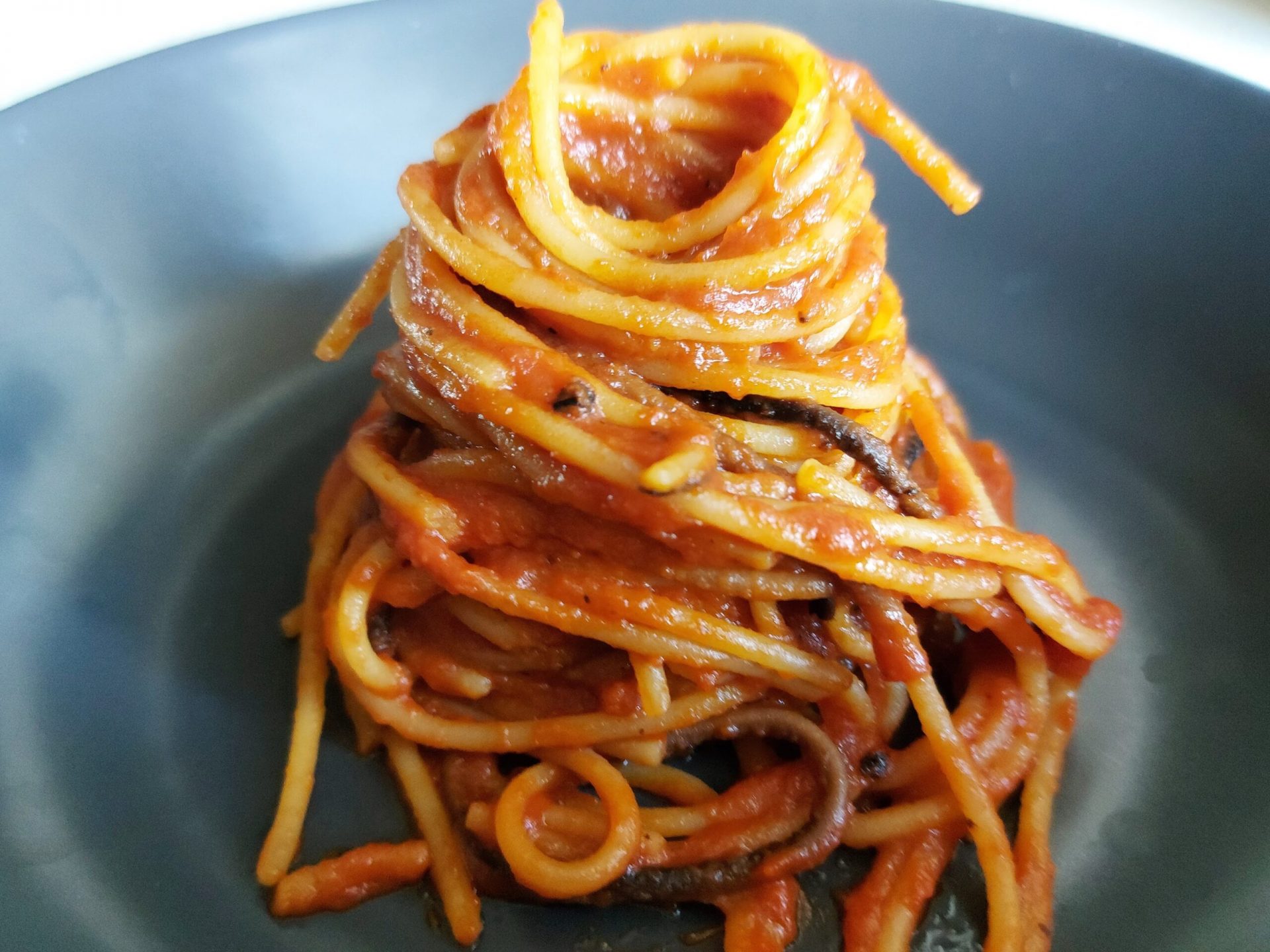Spaghetti all'assassina
spaghetti assassina, pasta assassina, spaghetti bruciati, pasta bruciati, assassin's spaghetti
Spaghetti all'assassina , also known as spaghetti bruciati ( Italian: [spaˈɡetti bruˈtʃaːti]; lit. 'burnt spaghetti'), is a pasta dish. Its preparation is markedly different from other spaghetti dishes; instead of being boiled in salted water and finished in sauce, the pasta is cooked directly in the pan (traditionally cast iron). A broth typically made of tomato sauce diluted with water is gradually added to the pan as the pasta absorbs it, similar to a risotto. As the spaghetti absorbs the sauce, it cooks directly on the pan surface, developing significant browning and a distinctive, crispy texture unique among pasta dishes. The debut of spaghetti all'assassina on restaurant menus most probably took place in the late 1960s and early 1970s. Some trace the original dish back to the Marc'Aurelio restaurant in the city centre of Bari, which eventually closed down. According to Felice Giovine, though, a historian of Apulian cuisine, spaghetti all'assassina originates from Al Sorso Preferito, a restaurant in the city centre of Bari, where it was created in 1967 by Foggian chef Enzo Francavilla at the request of two customers from Northern Italy. Due to its spiciness, they jokingly called Francavilla assassino ('murderer'), a word from which the name of the dish later derived. This is also the version of events favoured by the Accademia dell'Assassina, a group of culinary experts and enthusiasts founded in Bari in 2013 to protect against the diffusion of the recipe.
Source: Wikipedia
Recipes







